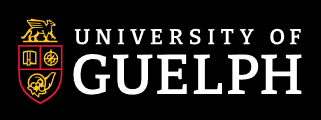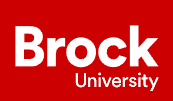Research on the Application of Guiding Text Teaching Method in Vocational Education
——Taking the course of "Fundamentals and Skills of Electronic Technology" as an example
DOI:
https://doi.org/10.63313/EH.9015Keywords:
Vocational Education, Guiding Literature Teaching Method, Vocational Education Curriculum, Fundamentals and Skills of Electronic TechnologyAbstract
With the rapid development of vocational education and the deepening of industrial upgrading, vocational education, as an important battlefield for culti-vating technical and skilled talents, has made innovation and reform of its teaching mode particularly important. As a student-centered teaching model that emphasizes self-directed learning and problem-solving abilities, the guiding text teaching method has been widely applied and popularized in vocational ed-ucation in Germany. However, it has not been widely applied in the field of vo-cational education in China and is still in its infancy and exploration stage. This article aims to explore the specific application and effectiveness of the guided text teaching method in the course of "Electronic Technology Fundamentals and Skills" in secondary vocational education. Through a research method combin-ing theory and practice, it provides reference and guidance for the curriculum reform and teaching quality improvement of secondary vocational education.
References
[1] Report on the 20th National Congress of the CPC [EB/OL]. (2022-10-25) [2023-06-20] https://www.12371.cn/2022/10/25/ARTI1666705047474465.shtml.
[2] Ren Tianmeng, Tang Weidong, Luo Jiangli Application of Guiding Text Teaching Method in the Design of Mechanical Drawing Course in Higher Vocational Education [J]. Zhongguan-cun, 2024, (01):104-105.
[3] Yang Xiaoxia, Yu Qun, Wang Yuanyuan, etc Reform and Exploration of Experimental Course Teaching in Electronic Technology Fundamentals [J]. Computer Knowledge and Technology, 2018, 14 (29): 146-148. DOI: 10.14004/j.cnki.ckt.2018.3425
[4] Straka G A. Self-Directed Learning in Germany: From Instruction to Learning in the Process of Work[J].European Views of Self-Directed Learning: Historical, 1997: 137.
[5] Teurlings C C J. The Leittext method: Learning to learn in commerce and industry[J]. Learning Environments: Contributions from Dutch and German Research, 1990: 287-297.
[6] Straka G A. Self-Directed Learning in Germany: From Instruction to Learning in the Process of Work[J].European Views of Self-Directed Learning: Historical, 1997: 137.
[7] Hufri ,Frima T .Practicality of Basic Electronics Module Integrating Creative Thinking in Diode Circuit Material and Its Application[J].Journal of Physics: Conference Se-ries,2022,2309(1):
[8] Gu Mingyuan Edited by Liang Zhongyi World Education Major Department of Vocational Education [M]. Jilin Education Press, 2002.
[9] Dong Chengren Vigorously advocating and promoting the guiding text teaching method in German vocational education [J]. Vocational Education Forum, 1997 (02): 48.
[10] Yan Zhonghua Development and Implementation of Vocational Education Curriculum - Based on Systematic Work Process [M]. Beijing: Tsinghua University Press, 2009.
[11] Wang Yan Application of Behavior Guided Teaching Method in Photoshop Class [J]. Occu-pation, 2008 (08): 58.
[12] Han Liya Preliminary exploration of the application of guided text teaching method in case teaching of internal medicine nursing [J]. Health Vocational Education, 2019, 37 (05): 75-76.
[13] Ye Chan Discussion on Light Emitting Diodes and Their Applications [J]. Electronic World, 2014, (18):139.
[14] Cheng Situo Characteristics and Application Analysis of Light Emitting Diodes [J]. Infor-mation Construction, 2015, (11): 37.
Downloads
Published
Issue
Section
License
Copyright (c) 2025 by author(s) and Erytis Publishing Limited.

This work is licensed under a Creative Commons Attribution 4.0 International License.





















